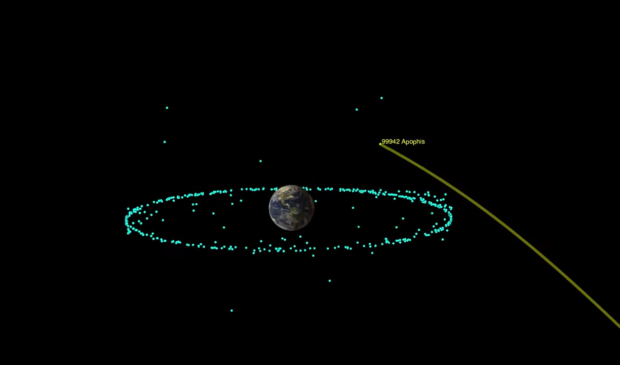
Image: screengrab from NASA/Jet Propulsion Laboratory-CalTech
Earth has finally been deemed safe from the potentially dangerous asteroid Apophis, which researchers believed would hit the planet by 2068.
“A 2068 impact is not in the realm of possibility anymore, and our calculations don’t show any impact risk for at least the next 100 years,” Davide Farnocchia of NASA’s Jet Propulsion Laboratory (JPL) said in a release last Friday, March 25.
Asteroid 99942 Apophis was first identified as a threat in 2004, after astronomers predicted it would come dangerously close to earth by 2029. It was thought to be the “most hazardous asteroids that could impact Earth.”
Years later, as researchers learned more about the asteroid’s orbit, its year of impact was moved to 2036 and then again adjusted to 2068.
This risk was finally ruled out when Apophis made a distant flyby of Earth around March 5, leading to their analysis of the asteroid’s 2029 location.
“With the support of recent optical observations and additional radar observations, the uncertainty in Apophis’ orbit has collapsed from hundreds of kilometers to just a handful of kilometers when projected to 2029,” Farnocchia explained. He added that given JPL’s knowledge of Apophis’ location in eight years, they now have more information about its movement in the future.
Apophis may not be hitting the planet anytime soon, but researchers are still expecting its approach on April 13, 2029. On that day, the asteroid will be visible from the Earth’s eastern hemisphere without the aid of binoculars or telescopes. This proximity will allow astronomers to get a close-up for research, without worrying about Apophis’ impact on Earth.
So far, scientists know that Apophis is about 340 miles wide and will be around 32,000 meters away from earth by 2029 — far closer to earth than any known communication satellite. That distance is also about a tenth of the Earth’s distance from the moon. JB
RELATED STORIES:
NASA soon to fly first ‘mini helicopter’ on Mars
Extremely rare meteorite may contain ‘important clues’ on Earth’s origins


